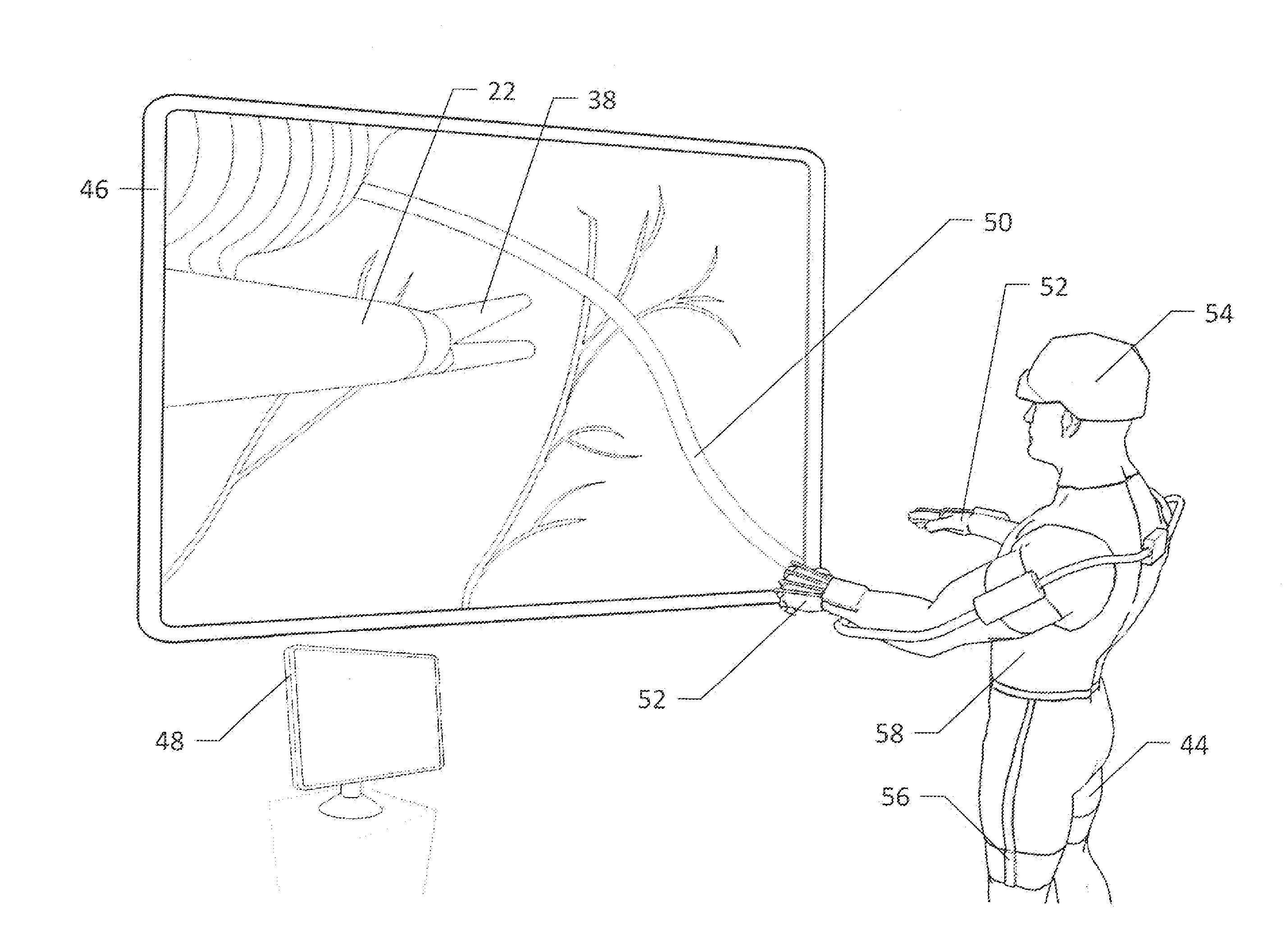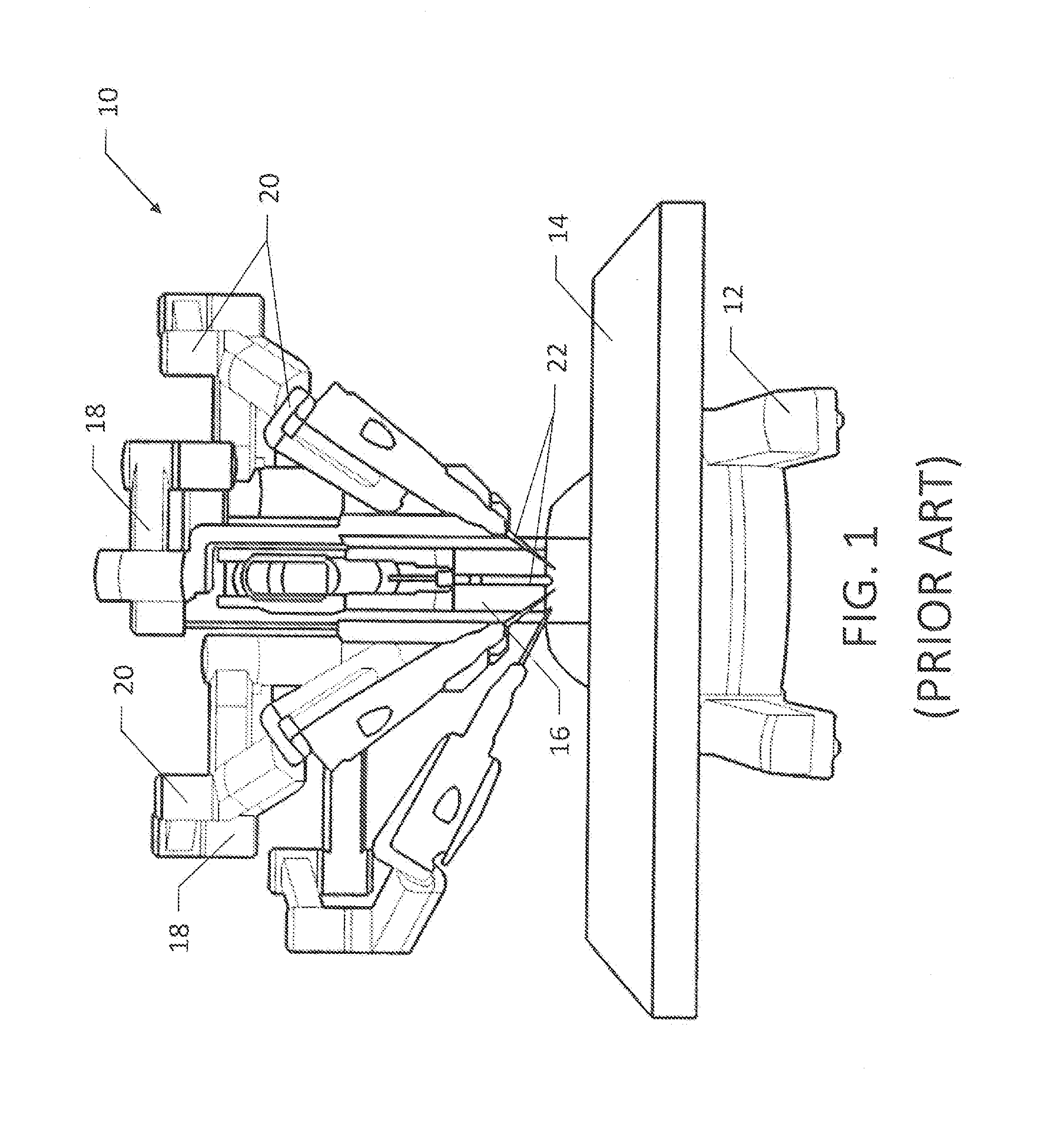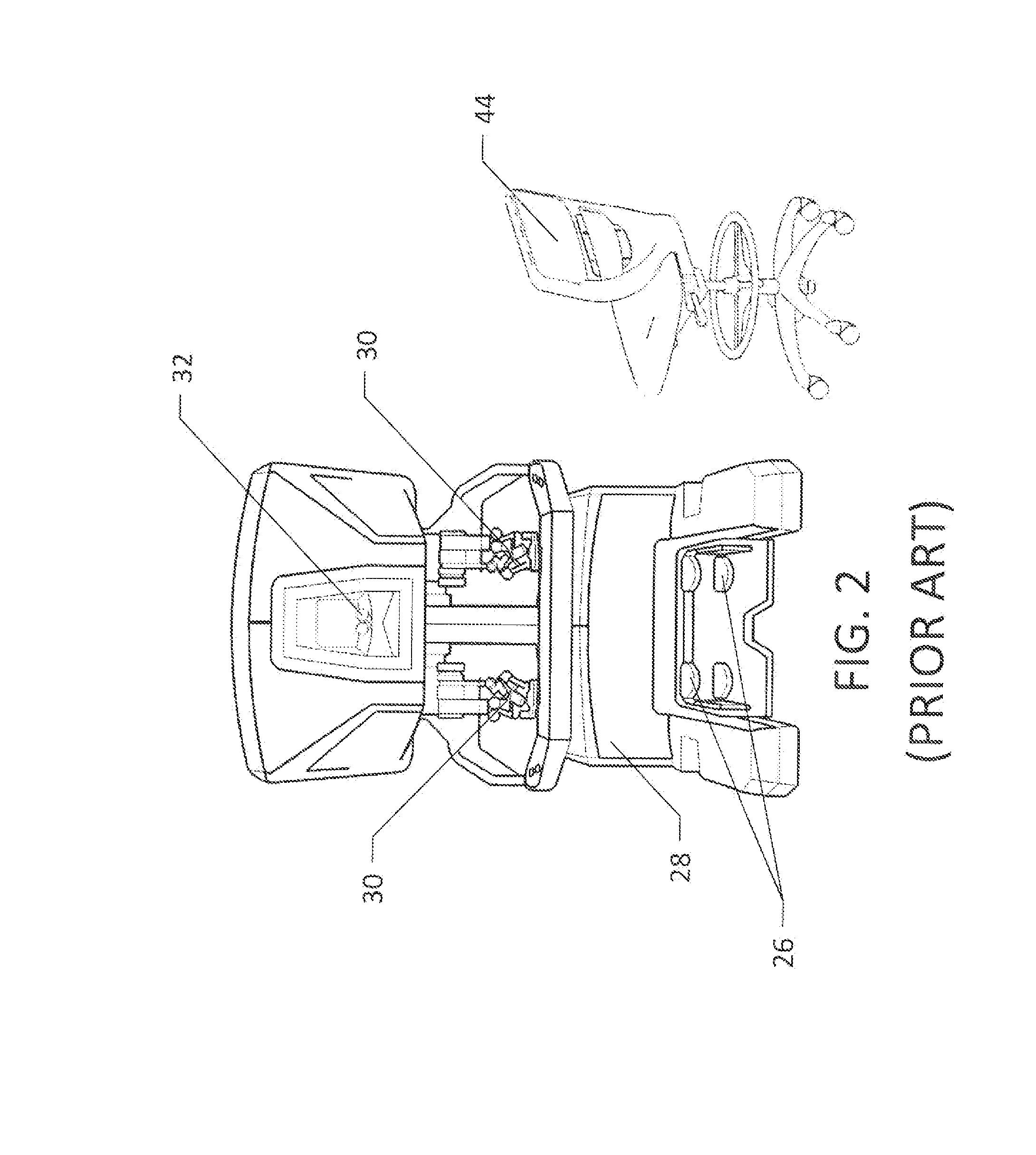Anthro-Centric Multisensory Interface for Sensory Augmentation of Telesurgery
a multisensory, sensory technology, applied in the field of medicine, can solve the problems of loss of benefits, surgeons no longer near and oriented with respect to patients, and the evolution of endoscopic procedures to telerobotic procedures is not without its drawbacks, so as to achieve greater situation awareness
- Summary
- Abstract
- Description
- Claims
- Application Information
AI Technical Summary
Benefits of technology
Problems solved by technology
Method used
Image
Examples
Embodiment Construction
[0044]An over-arching goal of the present invention is to create a natural connection between a surgeon's body and the surgical implements being controlled. FIG. 5 shows a first embodiment which is constructed to achieve this over-arching goal. The figure shows the control apparatus and feedback mechanisms used to control a tele-robotic surgical device. These components allow surgeon 44 to control a robotic surgical apparatus such as depicted in FIG. 1.
[0045]FIG. 5 depicts a situation where one or more end effectors have been inserted into a small incision in a patient. A depth-sensing endoscopic camera system has also been inserted. Video monitor 46 provides a large depiction of what the camera system “sees.” The camera system is oriented so that it points toward end effector 22 (The surgeon controls the orientation of the camera system). The surgeon is attempting to use the end effector 22 to clamp target vessel 50. He has thus far only been maneuvering the end effector into posit...
PUM
 Login to View More
Login to View More Abstract
Description
Claims
Application Information
 Login to View More
Login to View More - R&D
- Intellectual Property
- Life Sciences
- Materials
- Tech Scout
- Unparalleled Data Quality
- Higher Quality Content
- 60% Fewer Hallucinations
Browse by: Latest US Patents, China's latest patents, Technical Efficacy Thesaurus, Application Domain, Technology Topic, Popular Technical Reports.
© 2025 PatSnap. All rights reserved.Legal|Privacy policy|Modern Slavery Act Transparency Statement|Sitemap|About US| Contact US: help@patsnap.com



